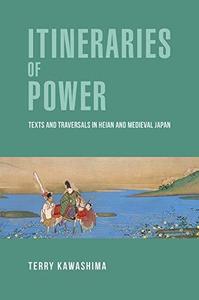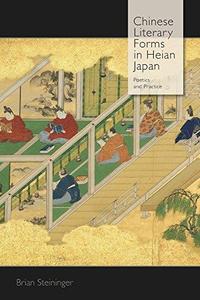- Книги
- 3-03-2023, 06:46
- 90
- 0
- voska89

Free Download Itineraries of Power: Texts and Traversals in Heian and Medieval Japan By Terry Kawashima
2017 | 256 Pages | ISBN: 0674970527 | PDF | 6 MB
Movements--of people and groups, through travel, migration, exile, and diaspora--are central to understanding both local and global power relationships. But what of more literary moves: textual techniques such as distinct patterns of narrative flow, abrupt leaps between genres, and poetic figures that flatten geographical distance? This book examines what happens when both types of tropes--literal traversals and literary shifts--coexist.Itineraries of Power examines prose narratives and poetry of the mid-Heian to medieval eras (900-1400) that conspicuously feature tropes of movement. Kawashima argues that the appearance of a character's physical motion, alongside literary techniques identified with motion, is a textual signpost in a story, urging readers to focus on how the work conceptualizes relations of power and claims to authority. From the gendered intersection of register shifts in narrative and physical displacement in the Heian period, to a dizzying tale of travel retold multiple times in a single medieval text, the motion in these works gestures toward internal conflicts and alternatives to existing structures of power. The book concludes that texts crucially concerned with such tropes of movement suggest that power is always simultaneously manufactured and dismantled from within.
Полная новость
- Книги
- 3-03-2023, 03:16
- 88
- 0
- voska89

Free Download Chinese Literary Forms in Heian Japan: Poetics and Practice By Brian Steininger
2017 | 308 Pages | ISBN: 0674975154 | PDF | 18 MB
Written Chinese served as a prestigious, cosmopolitan script across medieval East Asia, from as far west as the Tarim Basin to the eastern kingdom of Heian period Japan (794 1185). In this book, Brian Steininger revisits the mid-Heian court of the Tale of Genji and the Pillow Book, where literary Chinese was not only the basis of official administration, but also a medium for political protest, sermons of mourning, and poems of celebration.Chinese Literary Forms in Heian Japan reconstructs the lived practice of Chinese poetic and prose genres among Heian officials, analyzing the material exchanges by which documents were commissioned, the local reinterpretations of Tang aesthetic principles, and the ritual venues in which literary Chinese texts were performed in Japanese vocalization. Even as state ideology and educational institutions proclaimed the Chinese script s embodiment of timeless cosmological patterns, everyday practice in this far-flung periphery subjected classical models to a string of improvised exceptions. Through careful comparison of literary and documentary sources, this book provides a vivid case study of one society s negotiation of literature s position both within a hierarchy of authority and between the incommensurable realms of script and speech."
Полная новость
